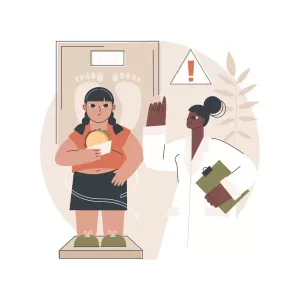

Our Review Process
Our articles undergo extensive medical review by board-certified practitioners to confirm that all factual inferences with respect to medical conditions, symptoms, treatments, and protocols are legitimate, canonical, and adhere to current guidelines and the latest discoveries. Read more.
Our Editorial Team
Shifa Fatima, MSc.
Author
Dr. Apoorva T, MHM.
MEDICAL ADVISOR
Can Diabetics Eat White Rice?
Diabetes is a metabolic disorder in which there is an increase in blood glucose levels. Diet factors play a crucial role to reduce sugar levels in the blood in people with diabetes. Rice is a commonly eaten food in India, but eating white rice is not always considered a good food option for people having diabetes.
White rice is produced by removing the germ, husk, and bran from rice. Due to this, only starch remains in a grain of rice. The nutritional value of 100 gm of white rice contains many carbohydrates and calories and fewer fibres than healthier options like brown rice. The number of other nutrients is also significantly less.
Excessive intake of white rice increases the requirement for insulin after meals. This leads to exhaustion of pancreatic cells and can cause a decrease in the amount of insulin. In addition, the amount of fibres and micronutrients in white rice is low. These dietary components help maintain blood glucose levels. For these reasons, white rice must be included in moderate amounts in the diet, and other nutritious food like vegetables and pulses must be taken with white rice. Read more to know about is white rice good for diabetics?

Table of Contents
White Rice Glycemic Index
The glycemic index of a food is helpful to measure the level of blood sugar increased by a specific food. A glycemic index range of 56 to 69 is considered a medium range. The glycemic index of white rice is 64, which can cause a spike in blood sugar levels by breaking down carbohydrates into blood sugar very fast. Also know about Indian diabetes diet.
Limiting the amount of white rice in a diet can help control the rise in blood sugar. Cooking rice in a starch-free way and cooling it to reduce the amount of starch can also help control blood glucose rise. Adding ingredients like vinegar oil can also lower the glycemic index of white rice. Also read about sugar free sweeteners and natural sweeteners.
White Rice Benefits
- White rice is gluten-free and the best food option for individuals with gluten allergies or celiac disease.
- White rice is considered a rich source of carbohydrates and can be used as an instant source to boost energy.
- Whole grains have been proven to reduce blood cholesterol levels. Hence, including white rice in the diet decreases the risk of strokes and heart disorders.
- White rice does not contain phytic acid that causes digestive problems. Due to this, the digestion of white rice is easier than brown rice.
- White rice contains a soluble fibre called butyrate that reduces inflammation in the gut. Hence, white rice helps to maintain the heart in a healthy state. Also know how to get freedom from diabetes?
Benefits of White Rice for Diabetes
- White rice has a high glycemic index. But, when white rice is combined with vegetables in the diet can prevent a spike in postprandial glucose levels.
- White rice reduces the risk of cardiovascular disease in people with diabetes. It helps maintain the blood cholesterol at optimal levels, keeping the heart healthy.
- White rice is a rich source of zinc. Zinc is required in carbohydrate metabolism and controls stress due to oxidative stress in diabetes conditions. Zinc helps prevent the progression of the disorder and the complications associated with it.
- White rice also provides a good amount of manganese in the body. Manganese helps increase glucose tolerance in the body by stimulating pancreatic cells to release more insulin. It also helps in wound healing and boosts collagen formation.
- For starch-free rice, the white rice can be cooked with excess water drained. This can benefit the stabilization of blood sugar levels due to low starch.
- The low-fat content of white rice helps in quick digestion and boosts the metabolic rate. This boost helps to decrease body weight. Hence, the intake of a controlled amount of white rice helps reduce obesity and associated complications in people with diabetes.
- Selenium in white rice reduces glycation of hemoglobin and LDL and cholesterol levels. Hence, selenium improves the lipidemic and glycemic profile in people with diabetes.
Also read about how to prevent diabetes.

Alternatives to White Rice
White rice can be made beneficial for people with diabetes by adapting the following cooking ways:
Vegetable Rice
White rice can be cooked with fresh-cut vegetables like green beans, corn, and carrot. Add both rice and vegetables. Simmer the rice and water after covering it with a lid. Let it cook till all liquid gets absorbed in the rice and vegetables. Add some butter and parsley, and serve. Also know about pp blood sugar
Starch-free rice
Wash rice thoroughly and add three times water as the quantity of rice. Add rice to boiling water and let it cook at medium flame. Cook till the rice starts floating on top. Check if the rice is soft and cooked properly. Remove excess water, and have it with vegetables. Also know more about diabetes diet chart indian
Is Rice Okay for Diabetics?
When you are dealing with diabetes, the type of rice and foods that you consume will be important as it will lead to spikes in blood sugar levels. Rice is often said to be unhealthy for people with diabetes. Eating rice that is filled with nutrition would be better to lower the starch content – and therefore, blood sugar spikes. Brown rice, wild rice, and long-grain white rice will have more fiber and nutrients as compared to short-grain white rice. The best rice for blood sugar would be the ones that have lower starch and lower GI.
Short-grain white rice has a high glycemic index – 70 and higher. This needs to be avoided by a person with diabetes. Additionally, the other nutrients are also far lower in this short-grain rice. Basmati, brown rice, and wild rice will have high GI scores that are in the moderate range. A GI score of 56 to 69 would be an average range. These can be eaten in moderation. One thing to keep in mind would be to alter the GI score – overcooking might increase the GI of the food.
One way to lower the glycemic load of the food would be by combining it with low-GI and high-fiber foods that can include protein and non-starchy vegetables. Eating a small portion of rice along with a significant amount of other vegetables will help lower the GI and GL of the food. Owing to the high white rice glycemic index, it may not be sustainable to eat in the first place. ½ cup of rice can be a good option along with a good quantity of vegetables. Also know more about diabetes diet chart.
Can Diabetics eat Potatoes and Rice without Spiking Blood Sugar?
Looking at your diet, It is crucial to make sure you are keeping your blood sugar levels in check. People do not want to compromise on eating rice and potatoes – these are ingredients that are universally loved. Nutrition experts have found a way for people with diabetes to enjoy their fair share of diabetes rice by avoiding blood sugar spikes and proper blood glucose control.
Replace half (of the amount you consume) of the rice or potatoes with lentils. This can effectively lower blood sugar levels and not lead to dramatic highs. Adding lentils was found to be a good way to eliminate the effects of these foods that will lead to spikes in the body’s glucose levels. A decrease of about 20-30% in glucose levels was found with the use of lentils as compared to when a person eats just rice or potatoes.
FAQs
1. Which is the best rice for people with diabetics?
People can consume white rice with diabetes in a limited amount and after adding vegetables, while brown rice is considered the best form of rice for those having diabetes. Brown rice has a low glycemic index and is a rich source of essential nutrients, making it beneficial for people with diabetes.
2. Can diabetics eat white rice?
People with diabetes need to monitor glucose intake. Hence, white rice with a high glycemic index must be taken in a limited amount. In addition, if a limited amount of white rice is taken with protein-rich vegetables, it can help to control blood glucose levels.
3. Does white rice spike your blood sugar?
“Does white rice spike your blood sugar?” – yes. Due to the high amounts of starch in white rice, there can be a significant spike in blood sugar levels. Rice is also known to have higher levels of carbs. However, long-grain white rice does not have a high glycemic index and can be consumed by people with diabetes.
4. Is rice bad for diabetics?
Rice and diabetes can have a complicated connection – you need to choose the type and amount of rice you eat very carefully so that you do not end up harming your blood sugar levels in general. Having long-grain white rice or brown rice, or day-old rice will reduce the starch and carb components in them, thus reducing the glycemic load of the food.
5. Does white rice have sugar?
100 grams of long-grained white rice will have about 0.1 grams of sugar which is not much. Since rice is naturally low in sugar, it can be consumed, however, the carb components in rice are high and that can lead to glucose spikes in the blood.
6. Is starch free rice good for diabetes?
Yes, if a person follows the methods to remove starch from the rice, it may also lead to an increase in vitamin content. This can improve the nutritional value of rice making it healthy to consume.
7. Does rice cause diabetes?
No, rice does not cause diabetes. However, if you are at risk for type 2 diabetes, consuming a lot of rice can lead to weight gain and sugar level spikes in the body. This could be one of the contributing factors to the development of diabetes.
8. How much white rice can a diabetic eat?
A person with diabetes should not eat more than ½ cup of white rice owing to the higher levels of carbs in rice. Rice should be eaten in moderation and should be limited to once or twice a week for optimal management of blood sugar levels.
References
- https://www.healthline.com/health/diabetes/diabetes-rice#dos-and-donts
- https://www.endocrineweb.com/news/diabetes/60013-how-eat-rice-potatoes-without-spiking-your-blood-sugar-add-lentils
Disclaimer
This website's content is provided only for educational reasons and is not meant to be a replacement for professional medical advice. Due to individual differences, the reader should contact their physician to decide whether the material is applicable to their case.








